From the depths of the ocean to its shallowest parts, most sea creatures have evolved in different clever ways to avoid predators and find food. One of their most effective strategies is camouflage. However, not all of them can hide in plain sight.
This article is on the 25 amazing sea creatures that have mastered the art of blending in with their surroundings. From squid to crabs and so many fish, these animals can change color or texture instantly for protection from prey and other dangers.
Get ready to be amazed by how well these aquatic animals blend into their environment – you won’t believe your eyes.
25 Sea Creatures That Can Camouflage
The following is a comprehensive list of 25 marine organisms that possess the ability to camouflage. And their ability to blend and hide makes them interesting. Please continue reading to learn more about them.
Cockatoo Waspfish
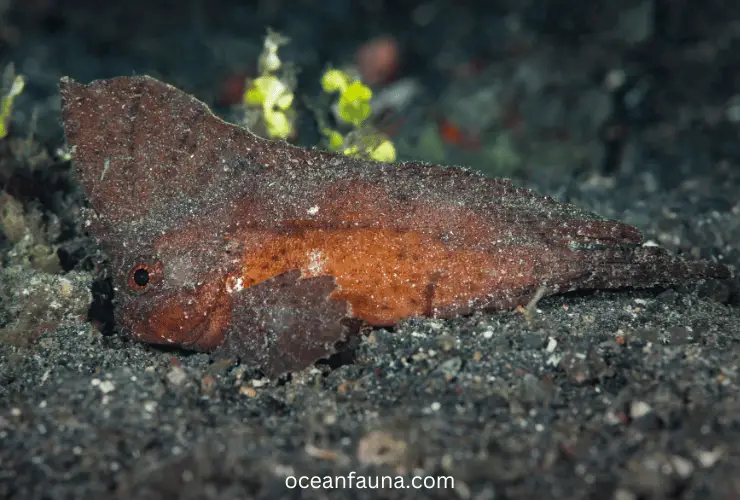
The Cockatoo Waspfish, scientifically known as Ablabys taenianotus, is a species of venomous fish found in the tropical coastal waters of the Eastern Indian Ocean and Western Pacific Ocean.
As their name suggests, Cockatoo Waspfish has physical characteristics resembling a wasp. They have slender bodies with rounded heads and pectoral fins that extend outward like wings.
Their coloration is also significant in their ability to camouflage, as their bright yellow and black stripes resemble those of a wasp. These stripes warn any potential predators, indicating to them that the Cockatoo Waspfish is venomous and dangerous.
In addition to their striped coloration, Cockatoo Waspfish has the ability to change their skin color, a process known as chromatophores. This allows them to camouflage themselves amongst their surroundings, blending in with rocks and coral to remain hidden from predators.
They can also mimic the behavior of other, less dangerous fish species to further deter potential predators and achieve their blending effect.
Crab

Crabs are fascinating creatures found in various marine and terrestrial habitats worldwide. They are members of the crustacean family, including lobsters, shrimp, and krill, and exhibit unique traits and behaviors that set them apart from other organisms in the animal kingdom.
One of the most striking features of crabs is their ability to camouflage. Many species have evolved to blend into their surroundings, making it difficult for predators to spot or capture them. For example, the decorator crab (family Majoidea) can attach bits of algae, shells, and other materials to its carapace to match the color and texture of its environment, effectively rendering itself invisible.
Other species, such as the sand crab (family Hippidae), have adapted to burrow in the sand or hide under stones, using their flattened body shape and long, spindly legs to navigate through tight spaces and remain hidden from view.
Some crabs, such as the spider crab (family Mithracidae), are covered in spines and bumps that break up their outline and create a textured appearance that blends in with the rocky areas where they live.
Cuttlefish
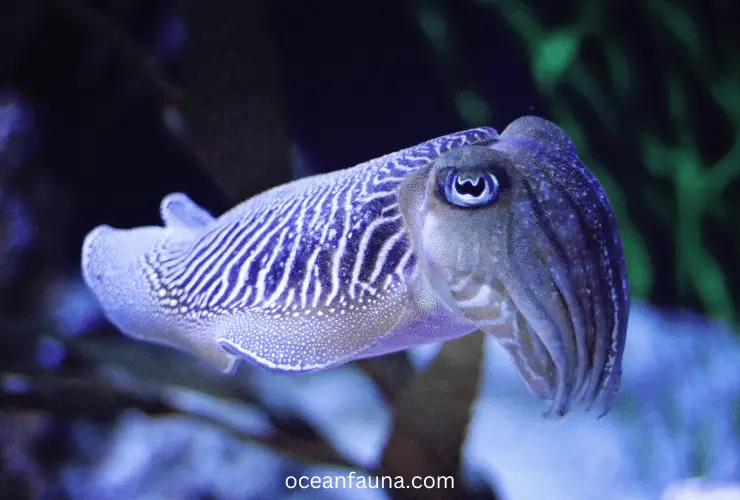
The cuttlefish, or Sepiida, is a marine mollusk that belongs to the class Cephalopoda. Found in the coastal waters of the Mediterranean, Baltic, and North Seas, cuttlefish are well-known for their remarkable ability to camouflage, making them experts in their niche.
Their remarkable camouflage technique is achieved using special pigment cells called chromatophores in their skin. These cells contain pigments that can be adjusted to blend in with the surrounding environment, making the cuttlefish nearly invisible to predators and prey alike.
The cuttlefish can also manipulate the texture of its skin, adding to the illusion of invisibility. Raising or lowering small bumps on its skin called papillae can change the texture to mirror the surface it’s resting on.
Flounder
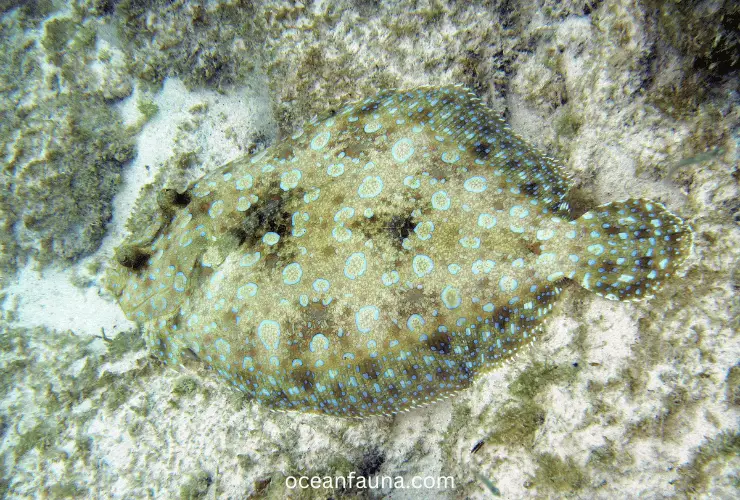
Flounder (Paralichthys) belongs to the family of flatfish and is mainly found in the coastal regions of North America. This fish species is known for its unique physical characteristics, including its flat, diamond-shaped body and two eyes located on the same side of the head.
Flounder is another excellent example of an animal that has evolved for optimal camouflage in its natural environment. It has several mechanisms for camouflaging itself depending on the species.
Firstly, most flounders possess a remarkable ability to change their color according to the surrounding environment. This is possible because of pigment cells in the skin called chromatophores, which expand or contract and allow flounders to blend in seamlessly with the background.
Also, the flounder’s unique body shape enables it to bury itself in sandy or mud substrates, with only the eyes protruding for vision. This provides the fish with an additional layer of protection against predators by hiding from them. This strategy is particularly useful for juvenile flounders looking to avoid larger predators in their environment.
Frogfish
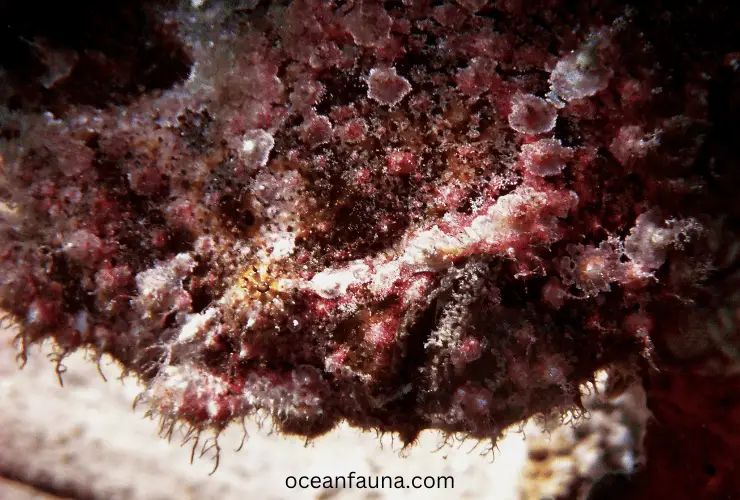
Frogfish (Antennariidae) is a family of marine fishes found in the tropical and subtropical waters of the world’s oceans. They are known for their unique appearance, which includes a flattened body, a large mouth, and modified fins that resemble feet. However, their most distinguishing feature is their ability to camouflage themselves to blend in with their environment.
Frogfish have evolved an extraordinary ability to alter their color, pattern, and texture to blend in perfectly with their surroundings, making them almost invisible to predators and prey alike.
They are also masters of mimicry, and some species can imitate coral, sponges, rocks, and even other animals, such as crabs or worms.
The frogfish’s unique appearance and impressive camouflage abilities make them a favorite subject among underwater photographers and scuba divers.
Gurnard
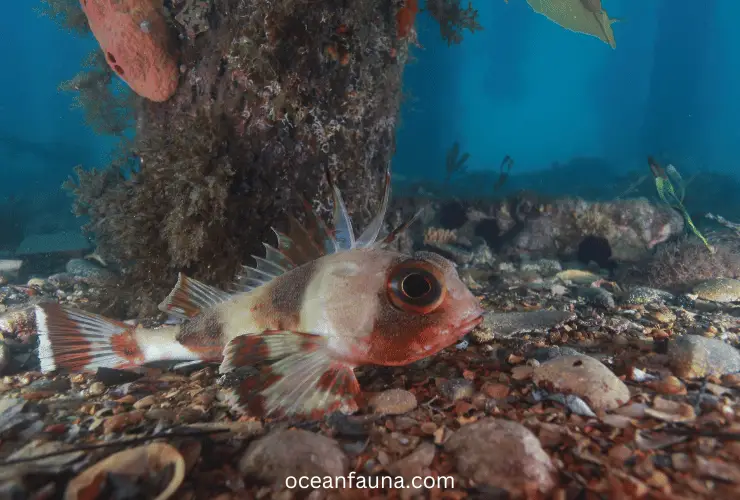
Gurnard (Chelidonichthys cuculus) is a species of fish found primarily in the eastern Atlantic Ocean, ranging from Iceland to the Mediterranean Sea. Their physical appearance is distinct, with a large head, bony plates, and spiny fins.
One of the fascinating aspects of the gurnard’s anatomy is its coloration and camouflage. While the upper part of their body is reddish-brown with dark blotches, their underside is a creamy white color. This coloration is a type of concealment, as the white underside camouflages them against the lighter-colored sandy bottoms of the ocean where they are commonly found.
Harlequin Sweetlips
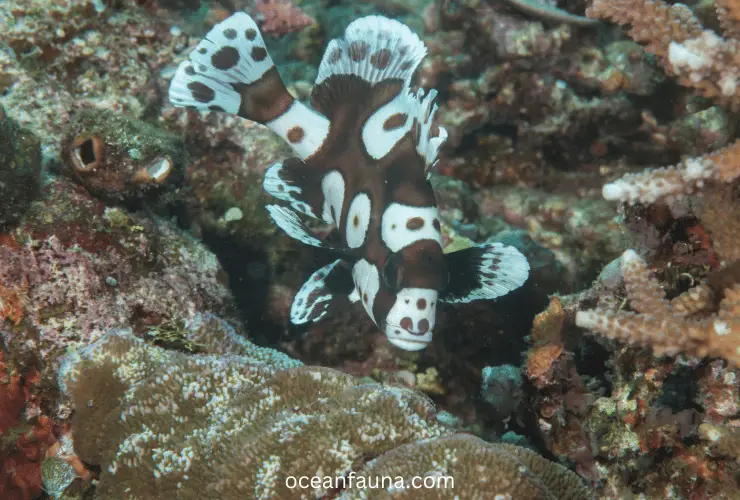
The Harlequin Sweetlips (Plectorhinchus chaetodonoides) is a stunningly beautiful fish that belongs to the family of grunts, Pomadasyidae. It can be found in the Indo-Pacific region’s tropical waters, specifically in the Red Sea, Maldives, Philippines, and Australia.
Harlequin Sweetlips are characterized by their colorful, asymmetric pattern that extend from the top of their head to the tip of their tail. The patterns found on their bodies are highly unique and vary between individuals, making it easier to identify them.
Their oval-shaped body is flat and compressed, and they can grow up to 60 cm in length. Their fins are relatively small compared to their body size and come in a vibrant, deep red coloration.
One of the most remarkable aspects of Harlequin Sweetlips is their remarkable camouflage technique. The fish can uniquely change its color and pattern to blend with the surrounding environment. This ability to camouflage makes it easier for the fish to hide from predators and ambush prey.
Additionally, Harlequin Sweetlips are generally solitary creatures, mostly hiding in crevices or among coral formations. They are active throughout the day, with their feeding pattern being mainly nocturnal. Their diet mainly consists of crabs, shrimps, and small fish.
Indian Ocean Walkman
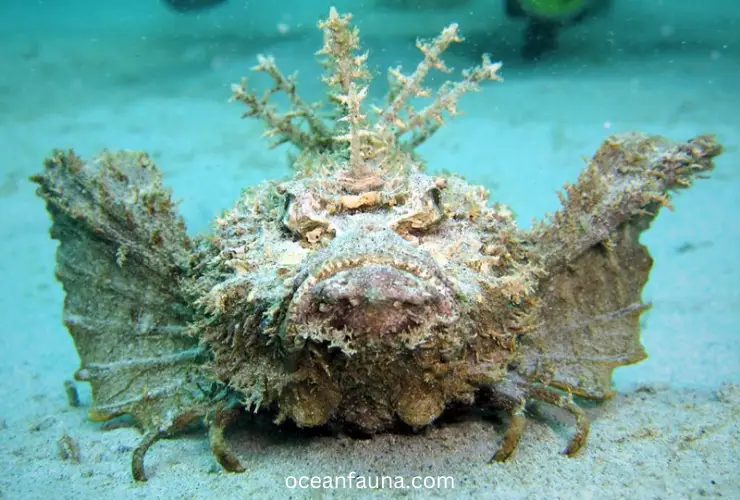
The Indian Ocean Walkman or Spiny Devilfish, scientifically known as Inimicus didactylus, is a fascinating species of venomous fish that is widely distributed in the Indian Ocean. It is also known as the sea goblin due to its bizarre and intimidating appearance.
One of the most unique and intriguing features of the Indian Ocean Walkman is its camouflage technique. It can remarkably change its color and texture to match its surroundings, making it almost invisible to its predators and prey. This process is called background adaptation, and it is achieved by the fish manipulating its chromatophore cells that contain pigments responsible for coloration.
The Indian Ocean Walkman has a mottled gray or brownish coloration and a rough skin texture that almost blends in with the rocks and gravel on the seabed. Its eyes are also placed high on its head, giving it a panoramic view of its surroundings and allowing it to detect any potential threats.
Additionally, this species is superbly adapted to its environment with a flattened body that allows it to blend in with its surroundings and lay perfectly still for long periods.
Leaf Fish
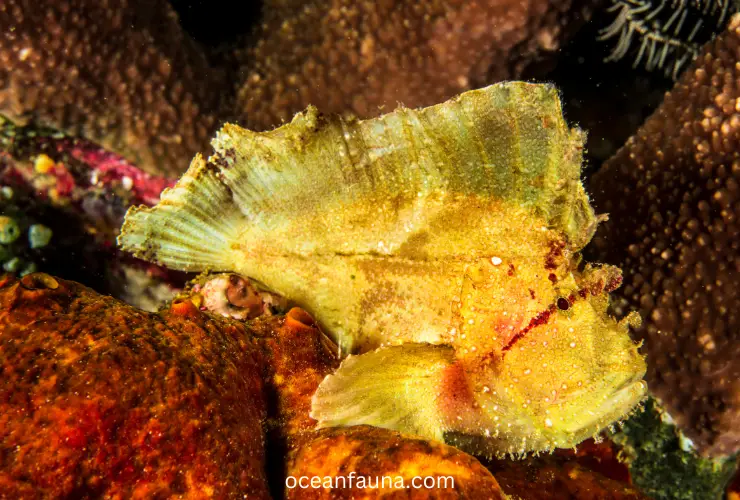
The Leaf Fish (Monocirrhus polyacanthus) is a highly specialized freshwater fish with a unique appearance and behavior. However, some of them can. Its body shape resembles a leaf, which is an essential part of its camouflage technique to evade predators and ambush prey.
This fish is typically found in slow-moving, murky waters with dense vegetation and fallen branches, which make ideal habitats for its leaf-like appearance to blend in seamlessly. Its coloration varies, ranging from greenish-brown to reddish-brown, with irregular patches and spots resembling leaf veins and discolorations.
Besides its appearance, the Leaf Fish also mimics dead leaves’ behavior by remaining motionless for long periods, waiting for prey to come close. Once a potential meal comes within reach, the Leaf Fish strikes quickly, engulfing it with its large mouth and swallowing it whole. Its hunting technique is so effective that it can even catch other fish that are larger than itself.
Leafy Sea Dragon
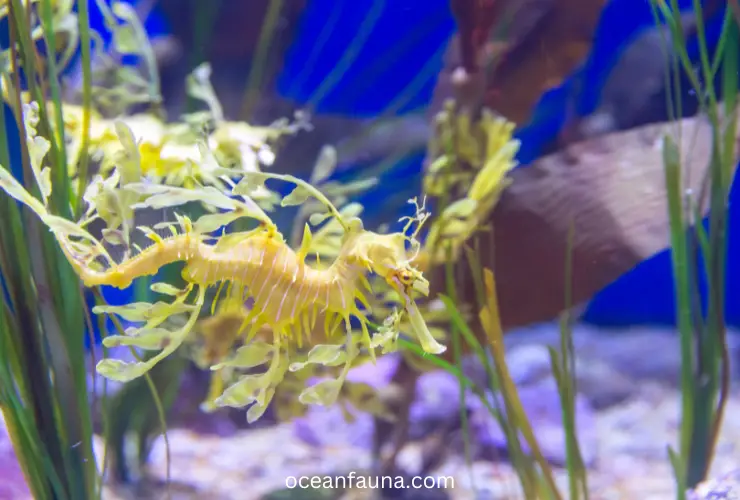
The Leafy Sea Dragon, known as Phycodurus eques, is a fascinating marine animal. It is a member of the seahorse family and is found in the southern coastal waters of Australia. The name “leafy” arises from the fact that this creature is covered in numerous leaf-like appendages that help it blend in perfectly with its environment.
The camouflage technique of the Leafy Sea Dragon is one of the most remarkable adaptations in the animal world. The appendages covering the creature’s body are designed to resemble leaves and can change their color to match the surrounding environment, making it almost impossible for predators to detect them.
This ability to alter their color is due to a unique feature of the Leafy Sea Dragon’s skin, which contains pigment cells known as chromatophores.
Besides their extraordinary camouflage technique, Leafy Sea Dragons are also known for their graceful movements. They move slowly and gracefully through the water, resembling drifting seaweed, further enhancing their disguise from potential predators.
Lizardfish
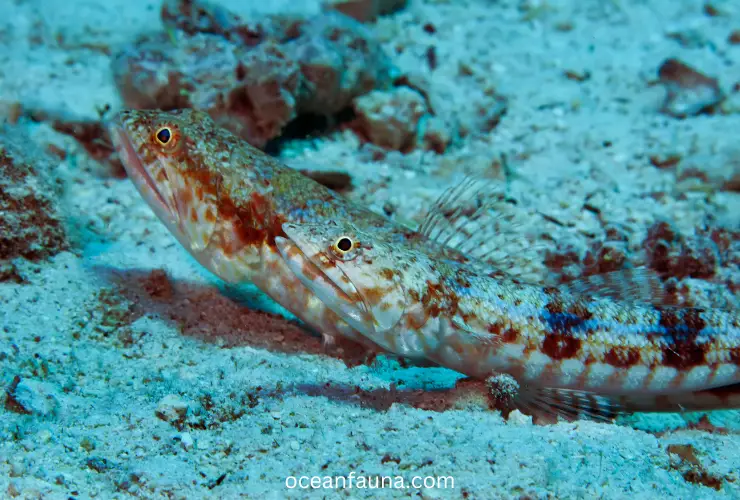
Lizardfish (Synodontidae) are a family of predatory fish found in various parts of the world, including the Indian and Pacific Oceans. They derive their name from their reptilian appearance, characterized by their elongated body, sharp teeth, and lizard-like head.
One of the most remarkable features of the lizardfish is their ability to blend in with their surroundings using a highly sophisticated camouflage technique. These fish have a mottled, speckled coloring that seamlessly allows them to blend in with their ocean environment. They can change their coloration quickly to match their surroundings, making them difficult to spot by both prey and potential predators.
Lizardfish are usually ambush predators that wait patiently for their prey to come close and then strike rapidly with their sharp teeth to devour them. They feed on various small fish, crustaceans, and squid, constituting the bulk of their diet.
Longhorn Cowfish
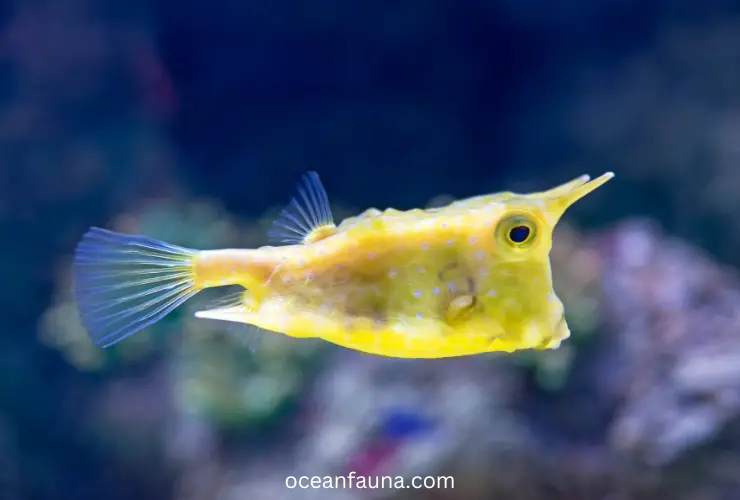
The Longhorn Cowfish, scientific name Lactoria cornuta, is a fascinating species of fish found in the tropical waters of the Indian and Pacific oceans. This fish is known for its unique appearance, which has earned it the nickname “cowfish.” It has a boxy head with protruding horns or ‘cow-like’ horns on its forehead, which give it a distinctive appearance.
What is most remarkable about the Longhorn Cowfish is its camouflage technique, which is essential for its survival. The cowfish can change its color and patterns to blend in with its surroundings, making it almost invisible to predators. This ability is known as “metachrosis,” allowing the cowfish to blend in with the coral reefs and other marine creatures it encounters.
The Longhorn Cowfish can alter its coloration in less than a second, which helps it to avoid detection when threatened. If the cowfish feels threatened, it inflates itself and releases a toxic substance from its skin, making it unappetizing to predators. This useful defense mechanism allows the cowfish to protect itself from danger.
Mimic Octopus
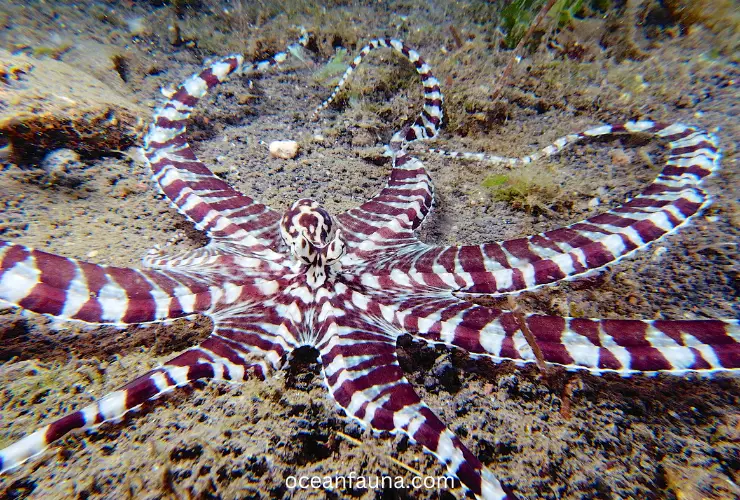
The Mimic Octopus (Thaumoctopus mimicus) is a highly intelligent marine animal with a remarkable ability to disguise itself. Known as the “master of disguise,” it can imitate various other marine creatures and blend seamlessly into its surroundings.
The Mimic Octopus has earned its name due to its incredible ability to mimic other marine animals’ physical characteristics and movements, such as lionfish, sea snakes, and even banded sole fish. It can change its skin color and texture to match the surrounding environment, and its flexibility allows it to contort itself into various shapes.
This camouflage technique is not only an impressive feat, but it also serves as a defense mechanism against predators. Mimicking poisonous or venomous animals like lionfish can deter predators from attacking. By changing its color and texture, the Mimic Octopus can blend into its surroundings, making it harder for predators to spot and track it.
The Mimic Octopus is also known to display unique behaviors, such as burying itself in the sand with only its eyes exposed, mimicking the movement of flounders, and swimming with its tentacles held together, mimicking a flatworm. All of these behaviors aid in its ability to blend in and survive in its environment.
In addition to its camouflage talents, the Mimic Octopus is also a skilled hunter. It feeds primarily on small fish and crustaceans and uses its tentacles to capture and immobilize its prey.
Ornate Wobbegong
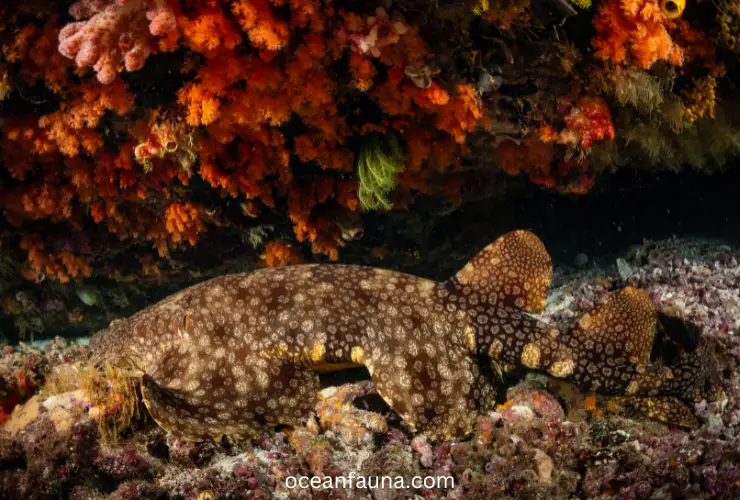
The Ornate Wobbegong (Orectolobus ornatus) is a carpet shark species highly coveted among divers and marine enthusiasts for its unique beauty and impressive camouflage abilities. These sharks are endemic to the coastal waters of Australia, where they are usually found in shallow, tropical environments such as coral reefs and rocky outcrops.
Like all wobbegongs, the Ornate Wobbegong has a flattened head and body that allows it to lie motionless on the ocean floor, where it blends seamlessly with its surroundings. Their ornate markings and patterns resemble the textures and colors of the rocks and corals in their habitat, allowing them to ambush unsuspecting prey.
Pacific Halibut
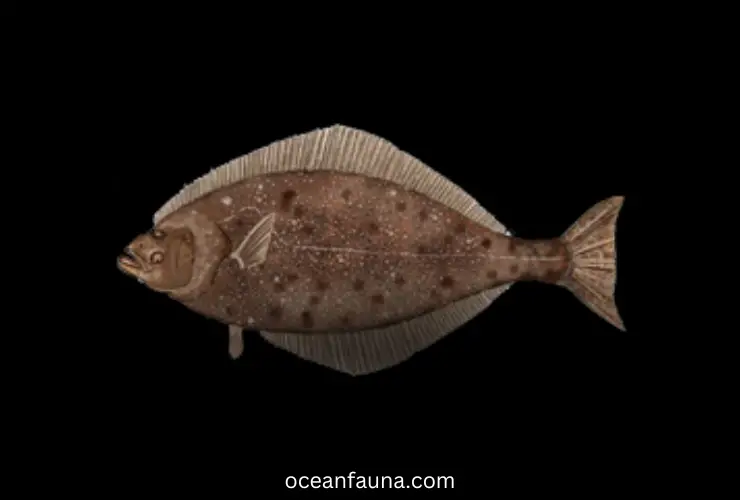
Pacific halibut, also known as Hippoglossus stenolepis, is one of the largest flatfish species found in the cold waters of the North Pacific Ocean. Their unique body structure allows them to camouflage themselves effectively in their environment.
Their flat, oval-shaped body is dark brown on the top side and white on the bottom. This coloration is an adaptation that allows the fish to blend in with the sandy, silty ocean floor where they live.
The dark brown coloration on the top side of their body helps them avoid being seen by predators looking down from above, while the white underside helps them blend in with the bright sky from below.
In addition to their coloration, Pacific halibut has a distinctive pattern of spots and blotches on their skin, further enhancing their camouflage. These spots and blotches vary in color and size, making each fish unique and allowing them to match their surroundings even more effectively.
To further enhance their camouflage, Pacific halibut are able to change its skin coloration to match their surroundings. This color change is achieved through specialized pigment cells in their skin called chromatophores. When the fish is in a light-colored environment, the chromatophores expand, making the fish appear lighter in color.
When the fish is in a darker environment, the chromatophores contract, making the fish appear darker in color. This ability to change color helps the fish blend in with its environment and avoid predator detection.
Robust Ghost Pipefish

The Robust Ghost Pipefish (Solenostomus paradoxus) is a fascinating marine fish species known for its exceptional camouflage abilities. This elongated and slender fish is primarily found in the warm tropical waters of the Indo-Pacific region, particularly around coral reefs and seagrass beds.
The Robust Ghost Pipefish is fascinating for its special way of blending in with its surroundings. Its body is thin and covered in fused bony plates, creating an armor that keeps it safe. Its long snout is used to prey on unsuspecting small invertebrates, allowing it to ambush them.
The Robust Ghost Pipefish has the ability to camouflage. It mimics the appearance of sea grass, rocks, and even bits of debris on the ocean floor. The fish can change its color, texture, and body shape to match its surroundings, thereby becoming nearly invisible to the naked eye.
Rock Goby
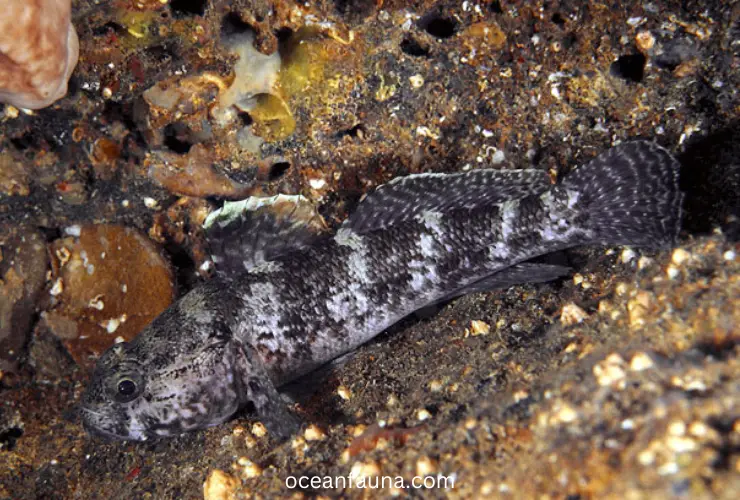
The Rock Goby, scientifically known as Gobius paganellus, is a ground-dwelling, small-sized fish that inhabits the rocky coastlines of the northeastern Atlantic Ocean. It is a particularly fascinating species, not only for its physical characteristics but also for its unique approach to camouflage.
The Rock Goby’s body is slim and elongated, with a flattened head and a large mouth capable of catching small crustaceans, mollusks, and other invertebrates. Its scales are a mottled brown and green, perfectly blending in with the rocky surroundings of its habitat.
The Rock Goby also possesses a series of bony ridges and plates that help it cling onto surfaces, making it a skilled climber that can ascend vertical walls of rocks, allowing it to access areas of its habitat other species can’t reach.
However, the Rock Goby’s true mastery lies in its ability to instantly change color. When sensing danger, it swiftly alters its body color to blend in with its rocky surroundings, making it incredibly difficult to spot. This capability is helpful in hiding from predators and during mating rituals, where males will change their colors to impress females.
Sargassum Fish
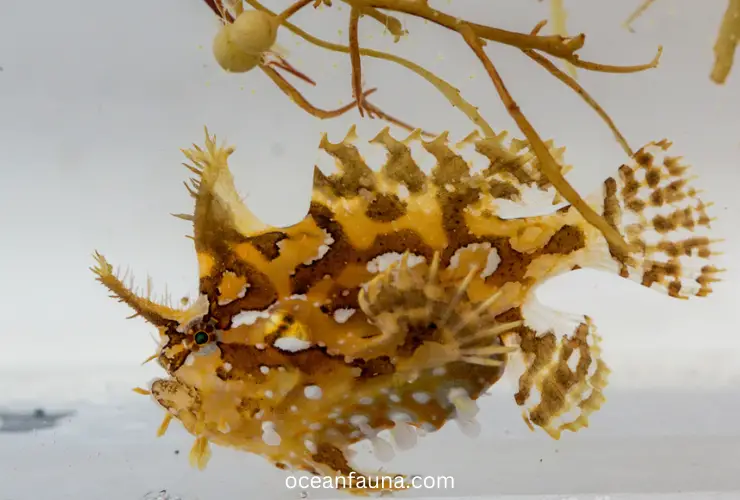
Sargassum Fish (Histrio histrio) is a species of marine fish that can be found in tropical and subtropical oceans. These fish are known for their unique appearance and remarkable camouflage technique, which makes them stand out from other species.
Sargassum Fish has a distinctive body shape, which allows them to float effortlessly among the seaweed and Sargassum plants that make up their habitat. The fish’s elongated body, long dorsal fin, and sharp teeth give it a menacing appearance that helps it to blend in with its surroundings.
However, the Sargassum Fish is known for its impressive camouflage skills. It can change its color and pattern to blend in perfectly with surrounding seaweed and plants. This makes it hard to detect by both predators and prey. Additionally, the fish can utilize sudden movements and color changes to mimic inanimate objects like seaweed.
Seahorse
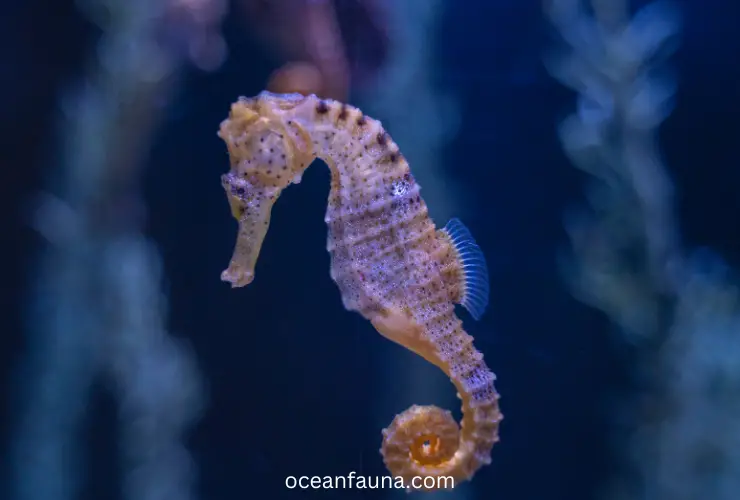
The Seahorse or Hippocampus is a stunning and unique creature that belongs to the Syngnathidae family. It is named after the mythical half-horse, half-fish creature of the same name in Greek mythology.
The Seahorse is remarkable because it can blend in perfectly with its surroundings using its impressive camouflage technique. This involves changing its color to match its environment and having bony plates on its body that mimic the texture of the coral and seagrass it lives with.
The Seahorse also has the unique ability to change the shape of its body to match the shape and movement of the surrounding plant life. This allows it to sway back and forth with the current, making it almost impossible to spot predators such as crabs, rays, and larger fish that may view it as a tasty snack due to its lack of defense mechanisms.
Speckled Sanddab

The Speckled Sanddab (Citharichthys stigmaeus) is a species of flatfish that can be found in the eastern Pacific from Alaska to Baja California. These small, bottom-dwelling fish are known for their unique camouflage technique, which helps them blend seamlessly into their surroundings, making them difficult to spot by predators.
The Speckled Sanddab fish has a unique pattern of brown, beige, and green spots on its upper side. This helps it blend in with the sandy ocean floor, especially in shallow waters where the sand is light-colored. The fish’s underside is either white or light beige, which helps it blend in with the sunlit surface waters above.
In addition to their unique coloration, Speckled Sanddabs have also developed other clever adaptations to help them avoid detection by predators. They are able to change the color of their skin to match their surroundings and can also change the direction of their eyes independently to better monitor their surroundings.
Squid
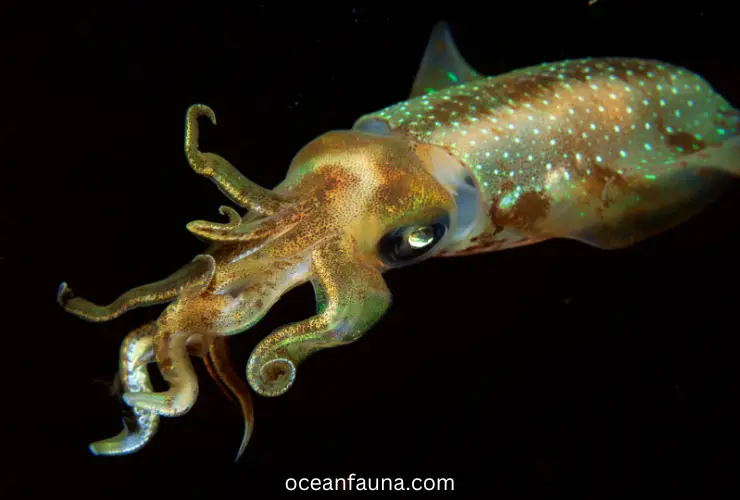
Squids (Decapodiformes) are a diverse group of marine cephalopods that share many characteristics, including a well-developed head, eight arms, and two tentacles. They are known for their unique features, like the ability to rapidly change their skin coloration and texture as a camouflage technique.
Squids can use their pigmented cells, called chromatophores, to change their color and pattern within seconds. This technique allows them to blend in with their surroundings and become almost invisible to predators.
Moreover, squids use counter-illumination as another method of camouflage. Counter-illumination involves producing light from below the body that matches the intensity and wavelength of the ambient light, thereby concealing their silhouette. The light is produced by specialized photophores present on the lower side of the squid’s body, which helps them remain invisible from predators below.
Stargazer Fish
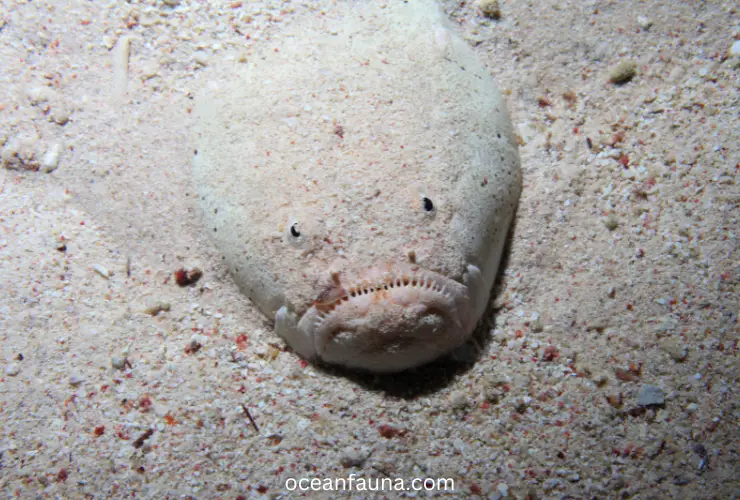
The Stargazer Fish (Uranoscopidae) is a unique species that has evolved to develop a fascinatingly effective camouflage technique. These fish are predominantly found in marine environments, ranging from shallow coastal waters to ocean depths.
Stargazers have relatively flat bodies with large, protruding eyes that gaze upward, giving them their characteristic name. The eyes are strategically positioned on top of their heads, allowing them to look out for potential prey or threats in the water above them.
However, what sets this species apart is their ability to camouflage themselves within their surroundings to avoid detection by predators and to ambush prey.
Stargazers possess the innate ability to match their skin color and texture to their environment, enabling them to blend in seamlessly with their surroundings. Their skin is covered in specialized cells called chromatophores, which they can contract or expand to control their coloration.
Stargazers can alter their skin color and texture to match the surrounding environment, such as sand, rocks, and seaweed. This technique allows them to remain hidden from predators and ambush unsuspecting prey.
Stonefish
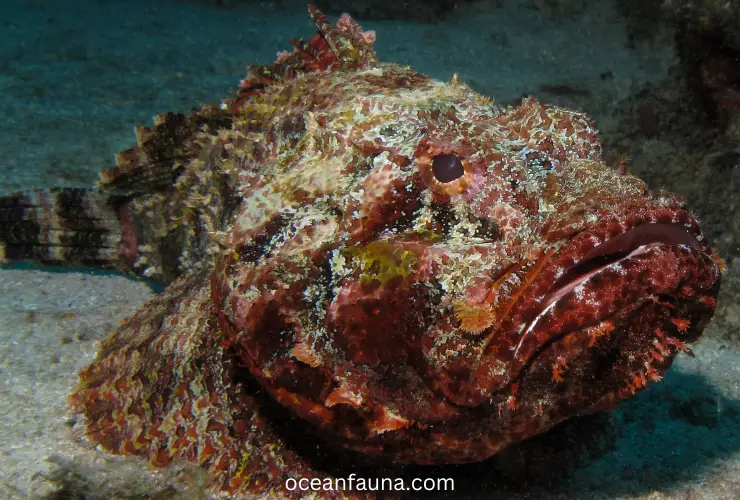
Stonefish, scientifically known as Synanceia verrucosa, is a type of venomous fish found in the coastal waters of the Indo-Pacific region. With their unique appearance and deadly toxins, these fish are considered one of the most venomous creatures in the world.
The Stonefish has impressive camouflage abilities, allowing it to blend seamlessly with its environment. This makes them almost invisible to both prey and predators. The fish achieves this through its mottled appearance and its capability to change color depending on its surroundings.
Stonefish typically inhabit shallow, warm waters close to rocky or coral reefs. They have the ability to bury themselves in the sand and leave only their eyes and dorsal fin exposed. This strategy allows them to wait patiently for prey to come within striking range.
Additionally, Stonefish can remain motionless for extended periods, improving their camouflage skills even further.
Tasselled Wobbegong
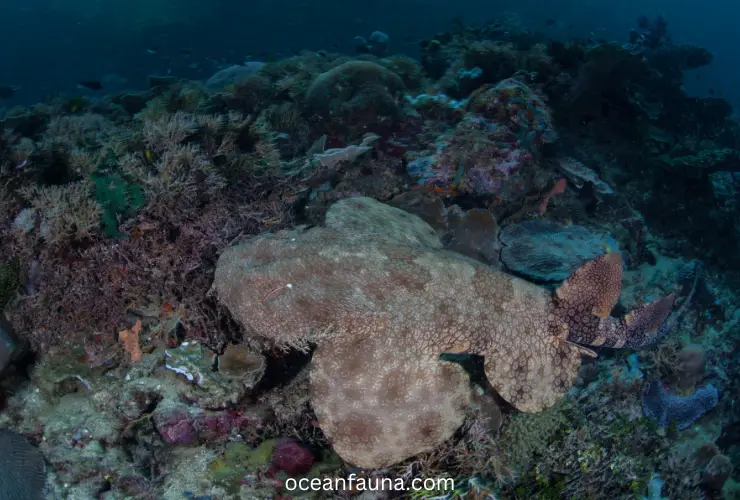
The Tasselled Wobbegong, also known as Eucrossorhinus dasypogon, is a carpet shark found in Southeast Asia, including the Philippines, Indonesia, and Australia. This shark derives its name from its unique skin, characterized by tassels and whiskers, giving it a distinct appearance compared to other shark species.
The Tasselled Wobbegong is a species that lives at the bottom of the ocean and is active at night. Its flattened body and unique coloring make it difficult to see by both prey and predators. Its skin is a blend of different shades of brown, with darker patches on its back and lighter colors on its underside. It lives in sandy or rocky environments and often has algae and debris on its skin, which helps it stay camouflaged.
Moreover, the Tasselled Wobbegong’s fabulous camouflage technique is aided by its ability to change its skin color in response to its surroundings. This remarkable adaptation allows the shark to blend in with its habitat effectively.
The shark lies motionless on the sea bottom, waiting for its prey to come near, and then suddenly, it springs into action, attacking its prey with lightning-fast speed.
Conclusion
Hopefully, you have a compact knowledge of all the 25 sea creatures which can camouflage and blend in with the environment. All of these animals have different camouflage techniques and strategies that help them outwit predators and sneak up on unsuspecting prey. These creatures’ remarkable adaptations prove that nature is truly a marvel.

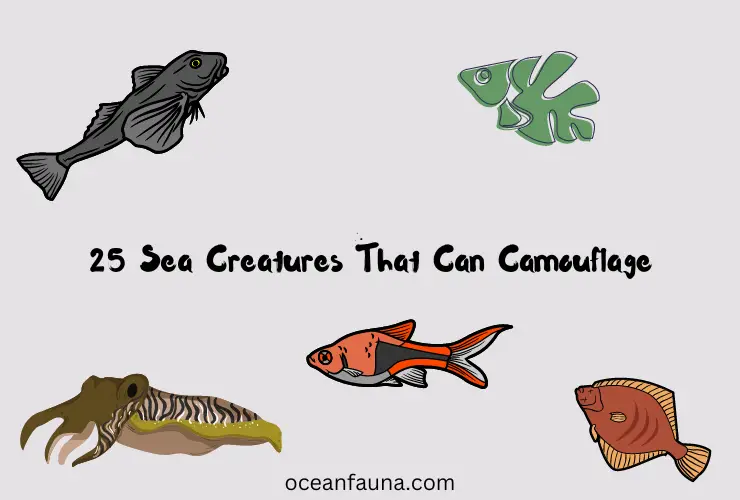
5 thoughts on “25 Sea Creatures That Can Camouflage”